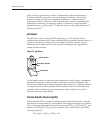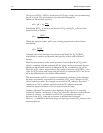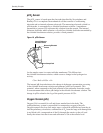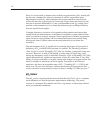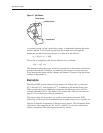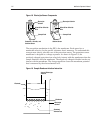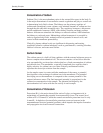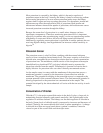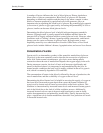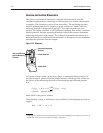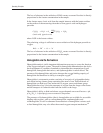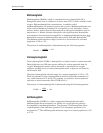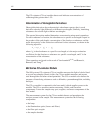
Operating Principles IĆ17
Hypochloremia is usually seen in states of hyponatremia. However in pyloric
stenosis, chloride levels are usually proportionally lower than sodium levels.
Hyperchloremia is seen in cases of excessive administration of chloride and in
renal failure. Additionally, because the chloride level remains fairly constant, it is
valuable in the calculation of the anion gap.
Chloride Sensor
The chloride sensor is a half-cell that combines with the external reference sensor
to form a complete electrochemical cell capable of measuring chloride
concentration in a sample. The sensor contains a silver/silver chloride wire
surrounded by an electrolyte solution that has a fixed concentration of chloride
ions. The membrane is a derivitized quaternary ammonium compound that is
immobilized in a polymer matrix. It acts as an ion exchanger with a high selectivity
for chloride ions over other ions present in the sample, and separates the electrolyte
solution from the sample.
As the sample comes in contact with the membrane of the chloride sensor, chloride
ion exchange occurring at the membrane, creates a membrane potential. The
potential that develops in the chloride sensor is compared to the constant potential
of the external reference sensor. The final measured potential is directly
proportional to the chloride ion concentration in the sample. The potential
developed by the electrochemical cell varies with the ion activity in the sample.
Concentration of Ionized Calcium
Ionized calcium (Ca
++
) is the physiologically active form of calcium, which
comprises approximately 45% of the total calcium in plasma. It is essential for the
contractility of smooth vascular muscle, and, it plays a vital part in cardiovascular
function. It is also important in muscle function, nerve function, and bone
formation, and it is a cofactor in many cellular hormone and enzyme reactions.
The action of the parathyroid hormone (PTH)—1,25 dihydroxyvitamin D
(1,25D)—and calcitonin closely controls the concentration of calcium in
extracellular fluid, and regulates the transport of calcium across the gastrointestinal
tract, kidney, and bone. Calcium is one of the most tightly controlled analytes in
the body with fluctuations of less than 5% occurring about the mean during a
24-hour period.
19
Clinically, hypocalcemia can result from a deficiency of PTH or 1,25 D, which can
be caused by malabsorption of vitamin D, hypoparathyroidism, or chronic renal
failure. Hypercalcemia, which occurs more frequently than hypocalcemia, is
commonly caused by primary hyperparathyroidism and malignant disease. The
elevated calcium resulting from both of these conditions can produce abnormal
cardiovascular rhythms.



